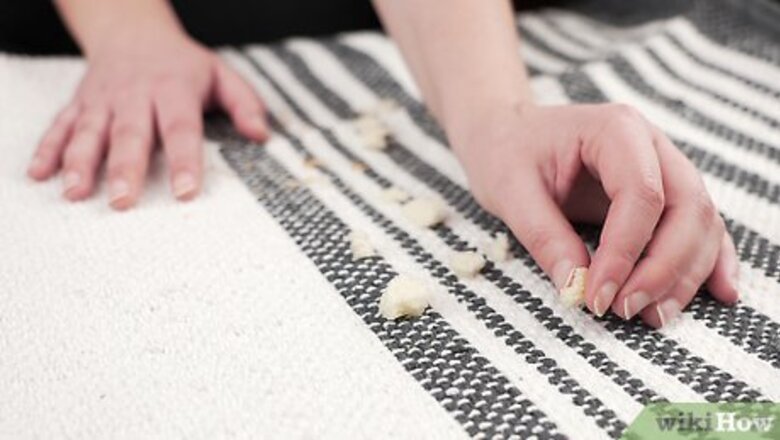
views
Picking up Surface Dirt
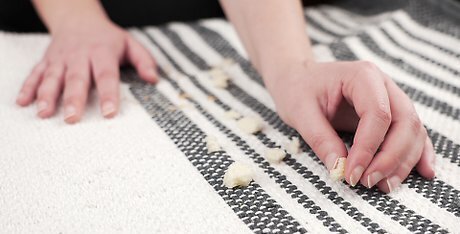
Pick up large pieces of debris by hand. Even if you were using a vacuum, large chunks of dirt or trash need to be picked up. Get a small trash bag and take the time to bend down and clean up before getting started with any deeper cleaning. This will make your home look cleaner already.
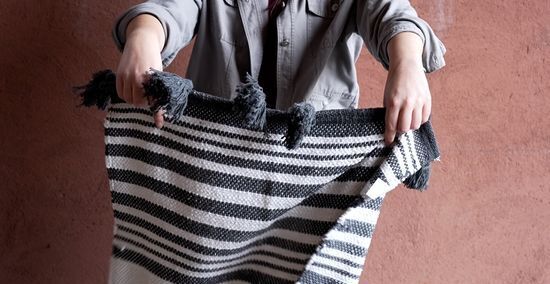
Shake area rugs outside to clean them. If you have any area rugs or smaller, removable carpets, take them outside. Over your lawn or driveway, vigorously shake out the dirt and debris. Be careful not to breathe in deeply since dust will be flying around. Take note if there’s any wind that may blow dirt back toward your house.
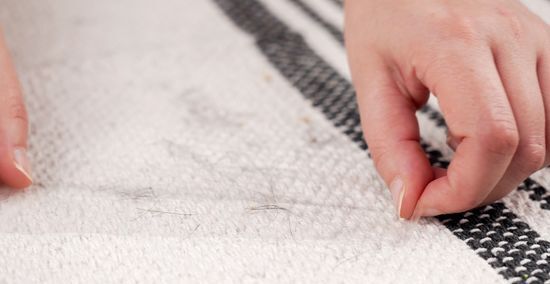
Use packaging tape to pick up hair and pet fur. Roll out and cut a few inches of tape and press it to the carpet to pick up loose hair, fur, or dirt. Discard of the tape strip when its stickiness is gone and cut off a new piece. This method is time consuming since tape strips are thin, but is an easy way to clean surfaces without doing a deep clean. Lint rollers are an alternative to using packaging tape. Break the carpet into sections to make cleaning less daunting and so you can keep track of where you’ve already cleaned. Don’t wear dirty clothes or shoes to clean since you’ll be on the ground, but also keep in mind that you may end up dirty after cleaning.
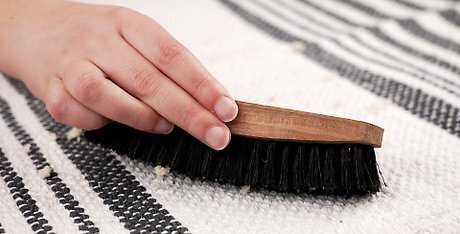
Brush the carpet clean. You can buy carpet brushes or sweepers at home good stores. Take the brush across the carpet like you would with a hairbrush. This method is good for carpets that have longer fibers; you can reach deeply into the grain of the carpet and pull out dirt that’s trapped. Pick a brush that has stiffer bristles for short fiber carpets. Soft synthetic bristles won’t have enough tension or power to push dirt off. A brush with metal teeth is good for faux fur rugs or very fine carpets. Be careful though as it may damage and separate a delicate weave. Some brushes come on the end of long broom-like handles so you don’t have to clean on your knees.
Washing Your Carpets

Check any labels or tags on your carpet. Depending on what your carpet fibers are made of, there may be specific instructions you need to follow. Not all materials can be treated the same way. Some rugs may need to be taken to a dry cleaners and some carpets can be soaked in vinegar without any consequence.
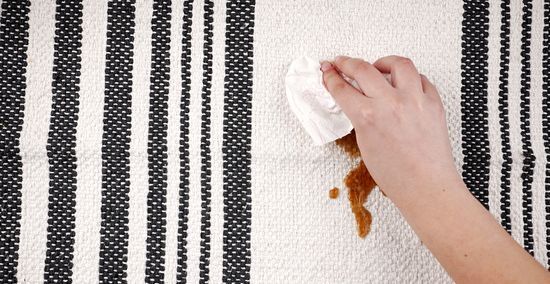
Spot-clean stains. Before doing a comprehensive cleaning of your carpet, check around for egregious spots and stains that need to be dealt with. It’s easier to get stains out before cleaning the entire carpet so you don’t accidentally rub the stain deeper into the fibers. Blot stains, don’t rub them. Sometimes you just need to use scissors to trim long fibers that have stains that simply won’t come out. Hydrogen Peroxide is best for getting out bodily fluids and stains such as blood or urine. You can use commercial stain removers and cleaning products to get rid of stains. Make sure that the chemicals won't ruin your carpet by double-checking its compatibility with your carpet material. Dab beer and wine stains with club soda poured onto a rag cloth. Scrape off gum and sticky substances with a plastic serrated knife. For grease and other difficult stains, put some dish detergent that's designed specifically for grease in a spray bottle and spray and dab the stain until it's gone.
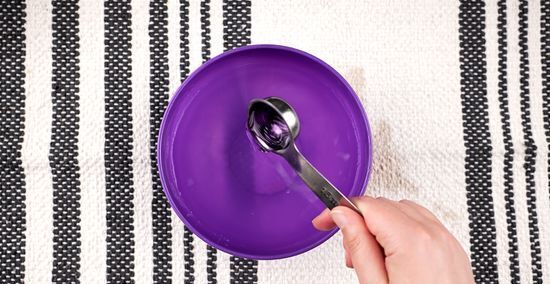
Get a bucket of water and dishwashing soap. Fill the bucket with water and put a few drops of soap in to make some bubbles. Wring out any excess water so you don’t saturate the carpet. Getting your carpet too wet will make it harder to dry. For a natural home remedy instead of dish soap, combine baking soda and vinegar. Sprinkle baking soda on sections of the carpet, spray enough vinegar to make it foamy, then sop it up with paper towels.
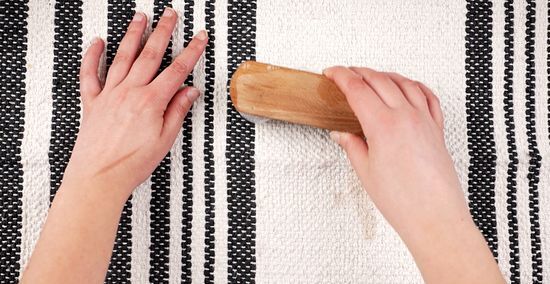
Scrub the carpet gently from side to side. Dip a large sponge or scrub brush and use it to scrub the dirt from your carpet. Work across the carpet in sections to make sure you get every piece of the area. It’s best to start against a wall or in a corner and work backwards so you don’t have to sit or kneel in wet areas that you’ve already cleaned. Scrub brushes with a handle will give you better control. For large carpets, have several sponges on hand so you can change them out when one becomes too dirty to be productive. While you scrub, change out the water frequently to avoid rubbing dirty water back into your carpet.
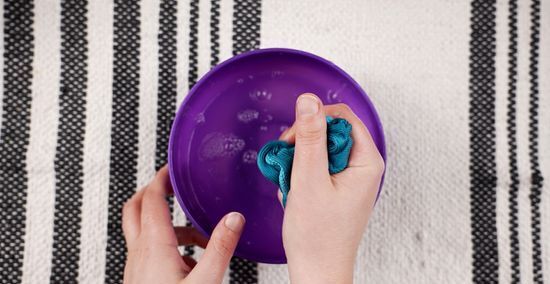
Change the bucket to fresh water. Once you’re finished, rinse out the bucket and fill it with just water. Go back over the carpet again with a wet, fresh water towel to scrub out any extra dirt. Again, don't oversaturate the carpet with moisture.
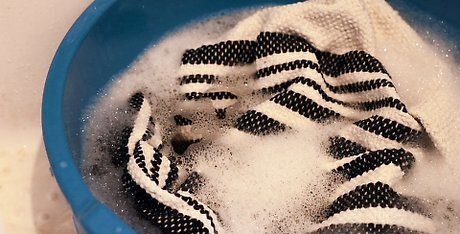
Put smaller area rugs in a bathtub to wash them more thoroughly. Fill a bathtub with lukewarm water and some mild dish soap. Gently swish the rug around in the tub to break up any dirt. Drain the tub and refill it a few times to fully rinse everything down the drain.
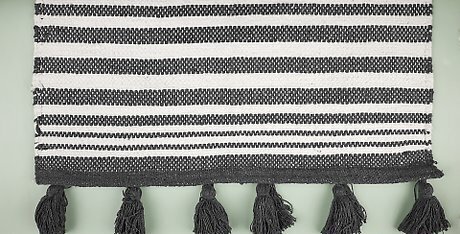
Block off the newly cleaned areas and let it dry overnight. Set up barriers by moving your furniture across the entryways that lead to the clean carpet. Keep kids, pets, or shoes away from the carpet while it dries to prevent any new dirt from ruining your progress. Set up fans to blow on the carpet to speed up the drying process. Clean your carpet on dry, low-humidity days so that it will dry faster and mold won’t build up.
Dry-Cleaning Your Carpets and Rugs
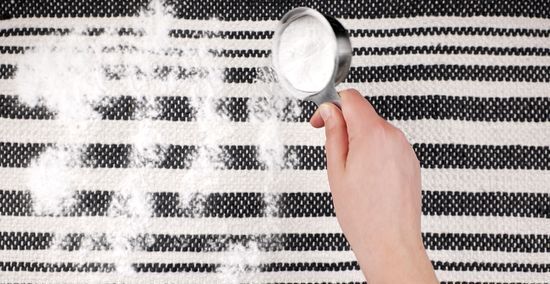
Sprinkle the carpet with a powder to cut odors. Liberally pour baking soda, cornstarch, or flour onto your carpets and let them sit for 30 minutes to an hour. This method works best with area rugs that can be shaken outside. Or instead, clean up by sweeping up the excess powder with a stiff broom or carpet sweeper. It’s easier to clean these powders from a carpet with fine fibers, but long fibers will trap them along with dirt. You can use this method to dry clean your carpets, but you may need to use a vacuum to suck up the fine powders. If you don’t want to vacuum because of the noise, wait until a better time. If you don’t have a vacuum, there still may be remnants left in your carpet since the fine powders may escape a broom or tape.
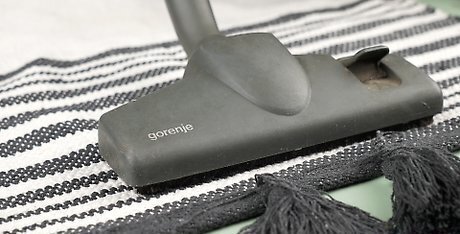
Pick up any smaller debris with a carpet sweeper. Sweepers are relatively affordable tools that you simply run across your carpet to help pick up dirt. They do not require electricity and are much quieter than a vacuum, so you can clean anytime and anywhere. Run a sweeper across your carpets for quick crumb removal or dirty shoe trails. Carpet sweepers have brushes that may need to be replaced periodically when they become filthy or too run down. Carpet sweepers cannot handle the dirt capacity of a whole house, so if you're cleaning each room you may need to clean out the bristles as you go. Empty out the sweeper regularly so you don't spread dirt around your house instead of cleaning it.
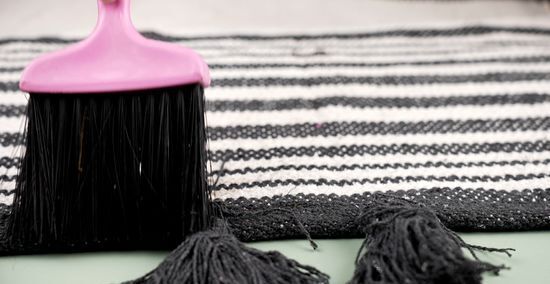
Sweep your rugs and carpets with a broom. Get an old-fashioned broom with stiff bristles, preferably made from bristly broom corn. These brooms are self cleaning because dirt doesn’t stick to the natural bristles like it does to a synthetic broom. Sweep in the direction of a dustpan or a door that leads outside to help minimize the mess. Using a stiffer broom forces dirt out of your carpet but it does require some forceful sweeping which can double as a workout. Broom corn bristles may break off while sweeping. Simply add them to the pile of dirt you’re going to throw out. Using a broom works best for short fiber carpets or carpets with stiff bristles.

Beat the dirt out of your rugs. Take your area rugs and removable carpets outside and hang them over a railing or fence with the dirty side facing up. Use a tennis racket, paddle, or a sturdy stick to beat the dirt and dust out. Stand to the side of the rug so that you don’t get any flyaway hair or dirt on you. It’s also easier to beat the rug from a side angle rather than straight on. If it’s a sunny day and there is no call for rain, use a garden hose to wash any extra dirt out of the rugs. Let them air dry outside. Sunlight can fade the color in rug fibers, so be careful if you’re cleaning a delicate material.















Comments
0 comment